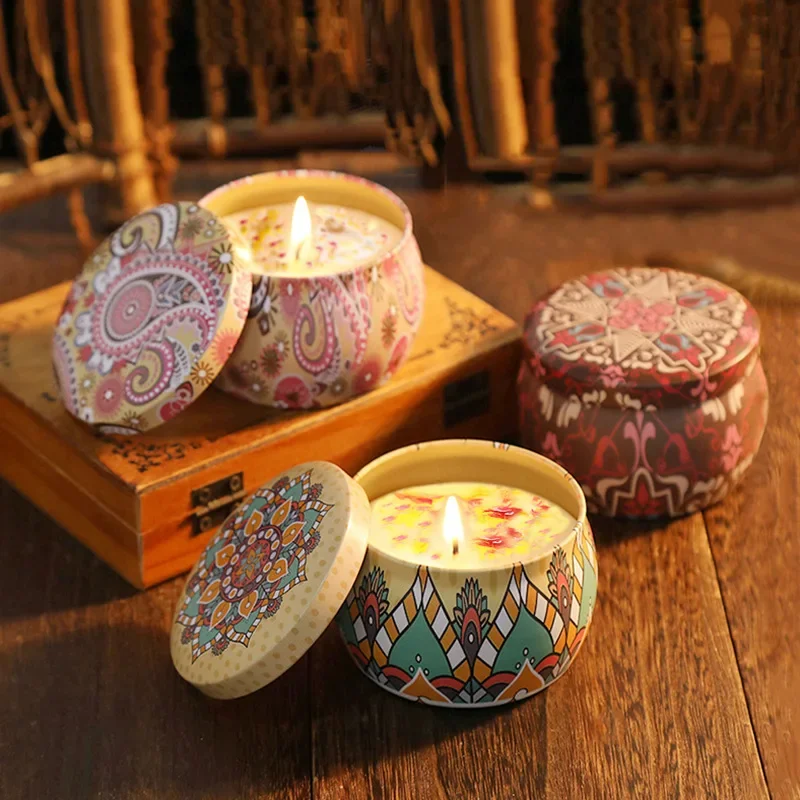Introduction: The Popularity of Soy Candles
In recent years, soy candles have gained immense popularity among consumers seeking eco-friendly alternatives to traditional paraffin candles. Made from soybean oil, these candles are often marketed as a cleaner and more sustainable option. However, concerns about the safety and toxicity of candles, in general, have led many to question whether soy candles are truly harmless. This article aims to address these concerns by debunking common myths surrounding soy candles and shedding light on their safety.
Understanding Soy Candles: What Are They Made Of?
Composition of Soy Wax
Soy candles are primarily made from soy wax, which is derived from soybean oil. This process involves hydrogenating the oil to create a solid form, which can then be molded into candles. Unlike paraffin wax, which is a byproduct of petroleum, soy wax is renewable and biodegradable, making it an attractive choice for environmentally conscious consumers. Additionally, soy candles often contain natural additives, such as essential oils or fragrance oils, which contribute to their scent and aesthetic appeal.
Comparison with Other Candle Types
When comparing soy candles to paraffin and beeswax candles, the differences in composition are notable. Paraffin candles, while widely available, release harmful chemicals when burned, including toluene and benzene, which are known carcinogens. Beeswax candles, on the other hand, are considered safe and emit negative ions that can purify the air. While soy candles may contain fewer harmful substances than paraffin candles, it is essential to consider their overall safety profile, including potential additives and fragrances.

Are Soy Candles Toxic? The Science Behind the Claims
Evaluating the Risks of Burning Soy Candles
One of the most significant concerns regarding soy candles is the potential release of harmful substances when they are burned. While soy wax itself is generally recognized as safe, the burning process can produce particulate matter and volatile organic compounds (VOCs), which may contribute to indoor air pollution. However, studies have shown that soy candles typically emit fewer VOCs than paraffin candles, making them a safer choice for indoor use.
The Role of Fragrances and Additives
Another factor that contributes to the toxicity debate is the use of fragrances and additives in soy candles. Many commercial soy candles contain synthetic fragrances that may release harmful chemicals when burned. These chemicals can cause allergic reactions, respiratory issues, and other health concerns. To mitigate these risks, consumers should opt for soy candles made with natural fragrances or essential oils, as these are less likely to emit harmful substances when burned.
Debunking Common Myths About Soy Candles
Myth 1: All Soy Candles Are Free of Toxins
A prevalent myth is that all soy candles are free from toxins. While soy wax itself is a safer option, this does not guarantee that the entire product is devoid of harmful substances. Consumers must examine the entire candle, including the type of wick used and any added fragrances. For instance, candles with metal wicks may release toxic fumes when burned. Therefore, it is crucial to choose high-quality soy candles from reputable manufacturers that prioritize safety and transparency.
Myth 2: Soy Candles Are All Eco-Friendly
While soy candles are often marketed as eco-friendly, this claim can be misleading. The production of soy wax requires significant agricultural resources, including land and water. Additionally, the widespread cultivation of soybeans has raised concerns about deforestation and the use of pesticides. To truly support sustainability, consumers should seek out candles made from organic soy or those sourced from sustainable practices, ensuring that their choice positively impacts the environment.
Benefits of Soy Candles: Why They Are a Safer Option
Reduced Toxic Emissions
One of the primary benefits of soy candles is their reduced toxic emissions compared to paraffin candles. Studies indicate that burning soy candles produces significantly fewer harmful pollutants, making them a safer choice for indoor environments. Additionally, soy candles often burn cleaner, leaving behind less soot and residue, which can contribute to better air quality in your home.
Longer Burn Time and Better Scent Throw
Soy candles also offer a longer burn time than traditional paraffin candles, making them more economical in the long run. Because soy wax has a lower melting point, it burns more slowly and evenly, allowing you to enjoy the fragrance for an extended period. Moreover, soy candles typically have a better scent throw, meaning they can disperse their fragrance more effectively throughout a room, enhancing your overall candle experience.

How to Choose Safe Soy Candles
Look for Natural Ingredients
When shopping for soy candles, always check the ingredient list. Look for candles made with 100% soy wax and natural fragrances or essential oils. Avoid candles that contain synthetic fragrances, dyes, or harmful additives. Additionally, opt for candles with cotton or wooden wicks, as these are less likely to release toxic substances when burned.
Seek Certifications and Transparency
Reputable manufacturers often provide certifications that demonstrate their commitment to safety and sustainability. Look for candles that are labeled as “phthalate-free,” “lead-free,” or “non-toxic.” Transparency is key; brands that openly share their ingredient sourcing and production processes are more likely to produce safe and high-quality products.
Proper Use and Care of Soy Candles
Tips for Safe Burning
To ensure the safe burning of soy candles, follow a few simple guidelines. Always trim the wick to about 1/4 inch before lighting to prevent excessive smoke and soot. Burn the candle for at least 2 hours the first time to ensure an even melt pool and avoid tunneling. Never leave a burning candle unattended, and keep it away from drafts, flammable materials, and children or pets.
Storage and Maintenance
Proper storage and maintenance can prolong the life of your soy candles and enhance their safety. Store candles in a cool, dry place away from direct sunlight, as heat can cause them to melt or lose their fragrance. If you notice any discoloration or changes in texture, it’s best to discard the candle. Regularly cleaning the candle holder can also prevent soot buildup and improve air quality when the candle is burned.
Choosing the Right Soy Candle
When selecting soy candles, look for high-quality options made with 100% soy wax and natural fragrances. Check for candles that are free from harmful additives, such as paraffin or synthetic dyes, to ensure a cleaner burn. Opt for candles with lead-free wicks, as these contribute to a healthier indoor environment. Consider the size of the candle; larger candles generally burn longer, while smaller ones are great for short-term use or smaller spaces.
Enhancing Candle Longevity
To maximize the burn time of your soy candles, make sure to follow a few simple practices. Always allow the wax to melt completely across the surface during each burn to prevent tunneling and to create an even burn. This can take anywhere from 2 to 4 hours, depending on the candle size. Avoid burning candles for more than 4 hours at a time to prevent overheating. When you’re finished, extinguish the candle by blowing it out gently or using a candle snuffer instead of dipping the wick into the wax.

Conclusion: Making Informed Choices
In conclusion, soy candles can be a safer and more environmentally friendly option compared to traditional paraffin candles, but it is essential to be an informed consumer. By understanding the composition of soy candles, debunking common myths, and making thoughtful purchasing decisions, you can enjoy the benefits of soy candles while minimizing any potential risks. As with any product, awareness and education are key to ensuring that your choices align with your values and health priorities.


